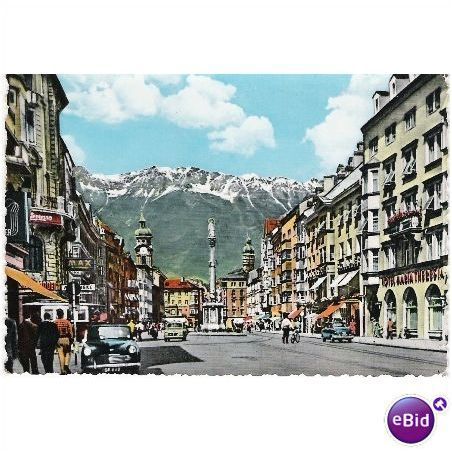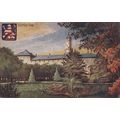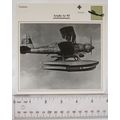Innsbruck - Maria Theresienstrasse Annasaule 1960s cars
- Condition : Used
- Dispatch : 2 Days
- Brand : None
- ID# : 33703330
- Quantity : 1 item
- Views : 469
- Location : United Kingdom

- Seller : justthebook (+1712)
- Barcode : None
- Start : Sun 07 Nov 2010 17:35:45 (BST)
- Close : Run Until Sold
- Remain : Run Until Sold
More Listings from This Seller view all
Seller's Description
- Postcard
- Picture / Image: Maria Theresa Strasse mit Annasaule
- Publisher: Tiroler Kunstverlag, Innsbruck
- Postally used: no
- Stamp: n/a
- Postmark(s): n/a
- Sent to: n/a
- Notes & Key words:
------------------------------------------------
Postage & Packing:
UK (incl. IOM, CI & BFPO): 99p
Europe: £1.60
Rest of world (inc. USA etc): £2.75
No additional charges for more than one postcard. You can buy as many postcards from me as you like and you will just pay the fee above once. (If buying postcards with other things such as books, please contact or wait for invoice before paying).
Payment Methods:
UK - PayPal, Cheque (from UK bank) or postal order
Outside UK: PayPal or Google Checkout ONLY please. NO non-UK currency checks or money orders (sorry).
NOTE: All postcards are sent in brand new stiffened envelopes which I have bought for the task. These are specially made to protect postcards and you may be able to re-use them. In addition there are other costs to sending so the above charge is not just for the stamp!
----------------------------------------------
Text from the free encyclopedia WIKIPEDIA may appear below to give a little background information:
*************
Earliest traces suggest initial inhabitation in the early Stone Age. Surviving pre-Roman place names show that the area has been populated continuously. In the fourth century the Romans established the army station Veldidena (the name survives in today's urban district Wilten) at Oenipons (Innsbruck), to protect the economically important commercial road from Verona-Brenner-Augsburg.
The first mention of Innsbruck dates back to the name Oeni Pontum or Oeni Pons which is Latin for bridge (pons) over the Inn (Oenus), which was an important crossing point over the river Inn. The city's seal and coat of arms show a bird's-eye view of the Inn bridge, a design used since 1267. The route over the Brenner Pass was then a major transport and communications link between the north and the south, and the easiest route across the Alps. The revenues generated by serving as a transit station enabled the city to flourish.
Innsbruck became the capital of all Tyrol in 1429 and in the fifteenth century the city became a centre of European politics and culture as emperor Maximilian I also resided in Innsbruck in the 1490s. The city benefited from the emperor's presence as can be seen for example in the so called Hofkirche. Here a funeral monument for Maximilian was planned and erected partly by his successors. The ensemble with a cenotaph and the bronze statutes of real and mythical ancestors of the Habsburgian emperor are one of the main artistic monuments of Innsbruck.
In 1564 Ferdinand II, Archduke of Austria received the rulership over Tirol and other Further Austrian possessions administrated from Innsbruck up to the 18th century. He had Schloss Ambras built and arranged there his unique Renaissance collections nowadays mainly part of Vienna's Kunsthistorisches Museum. Up to 1665 a stirps of the Habsburgian dynasty ruled in Innsbruck with an independent court. In the 1620s the first opera house north of the Alps was erected in Innsbruck (Dogana).
In 1669 the university was founded. Also as a compensation for the court as emperor Leopold I again reigned from Vienna and the Tyrolean stirps of the Habsburg dynasty had ended in 1665.
During the Napoleonic wars Tyrol was ceded to Bavaria, ally of France. Andreas Hofer led a Tyrolean peasant army to victory on the Berg Isel against the combined Bavarian and French forces, and then made Innsbruck the centre of his administration. The combined army later overran the Tyrolean militia army and until 1814 Innsbruck was part of Bavaria. After the Vienna Congress Austrian rule was restored. The Tyrolean hero Andreas Hofer was executed in Mantua; his remains were returned to Innsbruck in 1823 and interred in the Franciscan church.
Listing Information
| Listing Type | Gallery Listing |
| Listing ID# | 33703330 |
| Start Time | Sun 07 Nov 2010 17:35:45 (BST) |
| Close Time | Run Until Sold |
| Starting Bid | Fixed Price (no bidding) |
| Item Condition | Used |
| Bids | 0 |
| Views | 469 |
| Dispatch Time | 2 Days |
| Quantity | 1 |
| Location | United Kingdom |
| Auto Extend | No |




 for 1 item(s)
for 1 item(s)
















